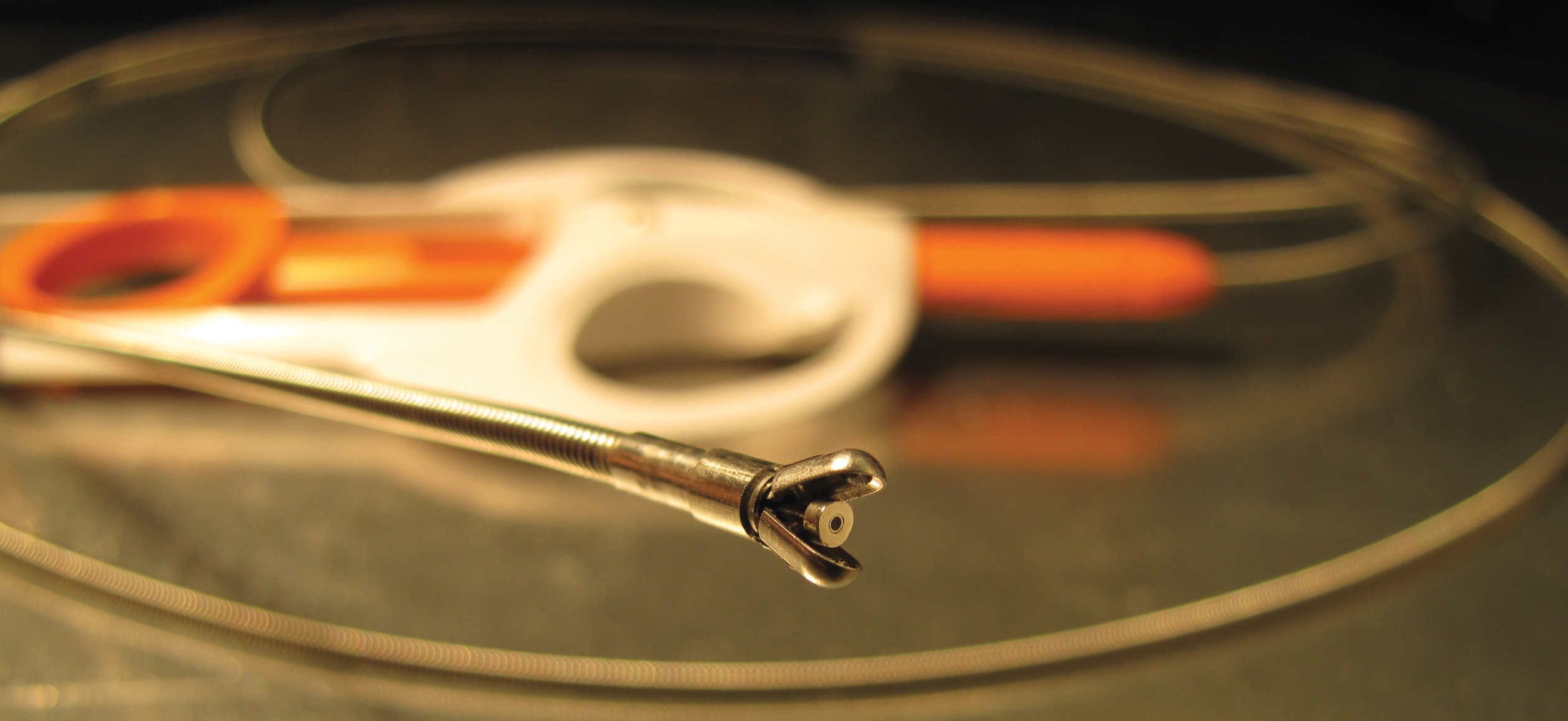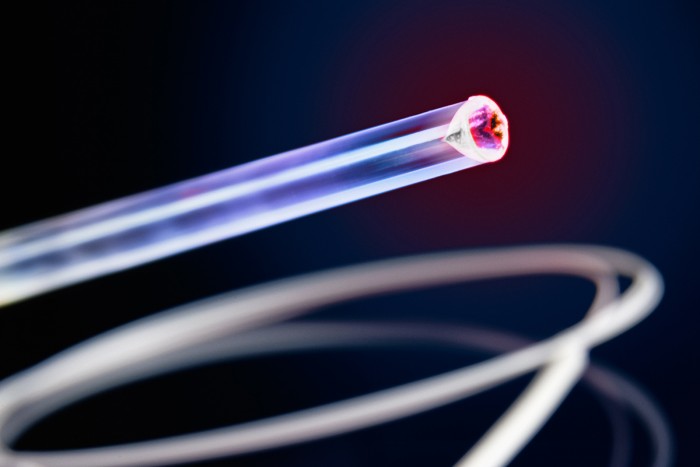
Due to their favorable characteristics, fiber optics find many applications within the medical community. Courtesy of 3SAE Technologies.
Introduction
When most people think of fiber optics, they think of cable TV and high-speed internet. However, fiber optics have also been prevalent in the medical community for a number of years. Today, the world’s healthcare providers strive to find advanced biomedical instrumentation to provide more efficient patient diagnosis, monitoring and treatment.
Fiber optics display a variety of characteristics that make them useful in the medical field. They are insensitive to electromagnetic disturbances and are commonly small in size. Additionally, their ability to withstand high temperatures, strong electromagnetic fields like MRIs, and ionizing radiation make fiber optics the perfect medical tool. Lastly, optical fibers are nontoxic, chemically inert, and intrinsically safe and thus, are an ideal material to use in and near the human body.
These unique properties allow for the development of complex biomedical instrumentation, which corresponds to an increased ability to perform surgical procedures and diagnostic examinations. Overall, this important technology continues to open doors in areas including neurology, gastroenterology, cardiology, and many more. As the global community continues to grow and live longer, advanced biomedical equipment becomes increasingly crucial.
Applications
The physical characteristics of fiber, such as its flexibility and light weight, make it ideal for many different medical applications. However, minimally invasive surgery is one of the main driving factors behind the success of fiber optics. The rise in incidences of diseases like kidney stones, cancer, cardiovascular diseases and arthritis globally has resulted in a larger population seeking minimally invasive procedures. Whereas traditional surgery exposes tissues and organs through large incisions, minimally invasive surgery allows for less pain during operations, faster recovery time and lower risk of infection for the patient.
Thus, the main applications for fiber optics in the medical field are in small, compact instruments that assist physicians in performing surgeries or diagnosing patients. These tools continue to develop in both the hospital setting and in emerging research studies.
Fiber Optics in Medical Instrumentation
One of the most prevalent applications of fiber optics in medicine are in the imaging and illumination components of endoscopes. The word endoscope is derived from the greek words skopein and endom, literally meaning to “view within”. The flexible, yet rigid multifibers enable visualization of internal organs and tissue via bodily orifices. Doctors use endoscopes to investigate symptoms such as nausea and abdominal pain, confirm diagnoses by performing biopsies, or give medical treatment.

Endoscopes are just one of the many ways fiber optic technology applies within the medical field. Courtesy of Fraunhofer CMI.
Fiber optic biomedical sensors are another huge application of fiber optic technology. These sensors can be intrinsic or extrinsic and are able to measure a variety of physiological characteristics. Body temperature, blood temperature, muscle displacement, and heart rate are just of a few of the many characteristics that fiber optic sensors can measure.
Optical coherence tomography (OCT), a type of biomedical sensor, is a medical imaging technique that utilizes imaging sensors to capture micron-scale, 3-D images from within an optical scattering media, like biological tissue. OCT is analogous to ultrasound imaging, but operates using light instead of sound. Additionally, it provides images of tissue in situ and in real time. This allows for instant and direct imaging of tissue morphology. Furthermore, in combination with catheters and endoscopes, OCT also provides high-resolution images of organ systems. It has advanced significantly in recent years, becoming the standard for diagnosis for things like coronary artery disease. This is possible due to the flexible and small-scale nature of fiber optics.
Cutting Edge Research
Researchers at the Massachusettes Institute of Technology (MIT) and Harvard Medical School have recently created an entirely elastic prototype of optical fibers. The prototype consists of microscopic, fiber optic tubes made of hydrogel. Hydrogel is a stretchy, biocompatible material made almost entirely of water. It is highly flexible, with the ability to stretch over 7 times its original length. The end goal of this research is to develop an advanced tool for the field of optogenetics, the practice of activating brain cells and neurons with microscopic light. However, as of right now, even the hydrogel is too rigid for application in the brain. In addition to its fragility, the flexible, soft nature of the brain is also extremely difficult to mimic. Thus, the prototype still has a long way to go before it can be introduced in hospital settings.

Researchers continue to stretch the boundaries of fiber optic technology to create advanced medical instrumentation. Courtesy of Design Indaba.
Furthermore, scientists at the University of St Andrews and Harvard Medical School are developing a new technology with the potential to heal wounds quicker and treat tumors more efficiently. This technology operates based on a principle called photochemical tissue bonding. This process involves combining visible laser light with photo-sensitizing dyes to create bonds between tissue surfaces. In their research, scientists found that optical fibers allowed for the application of tissue repair deeper within the human body. To achieve this, they developed biodegradable fibers that could be inserted into the body, delivering light to internal wounds. Conventional fiber optic devices are made from glass or plastic and remain permanent within the body until surgical removal. These fibers, however, can reabsorb into the body, eliminating the need for removal and further surgical procedures, while also healing wounds.
Conclusion
The integration of optical fibers into the medical community has enabled safer procedures, more efficient surgeries, faster recovery time, and better diagnostic examinations. The ideal characteristics of optical fibers, such as their amendability to sterilization and small dimension size, provide many opportunities for the development of medical instrumentation.
However, designing biomedical instrumentation continues to pose challenges. Medical devices must typically be reliable, highly stable, safe, and biocompatible among many other components. Although these requirements have created obstacles within the research community, the demand for sophisticated biomedical instrumentation continues to persist.
